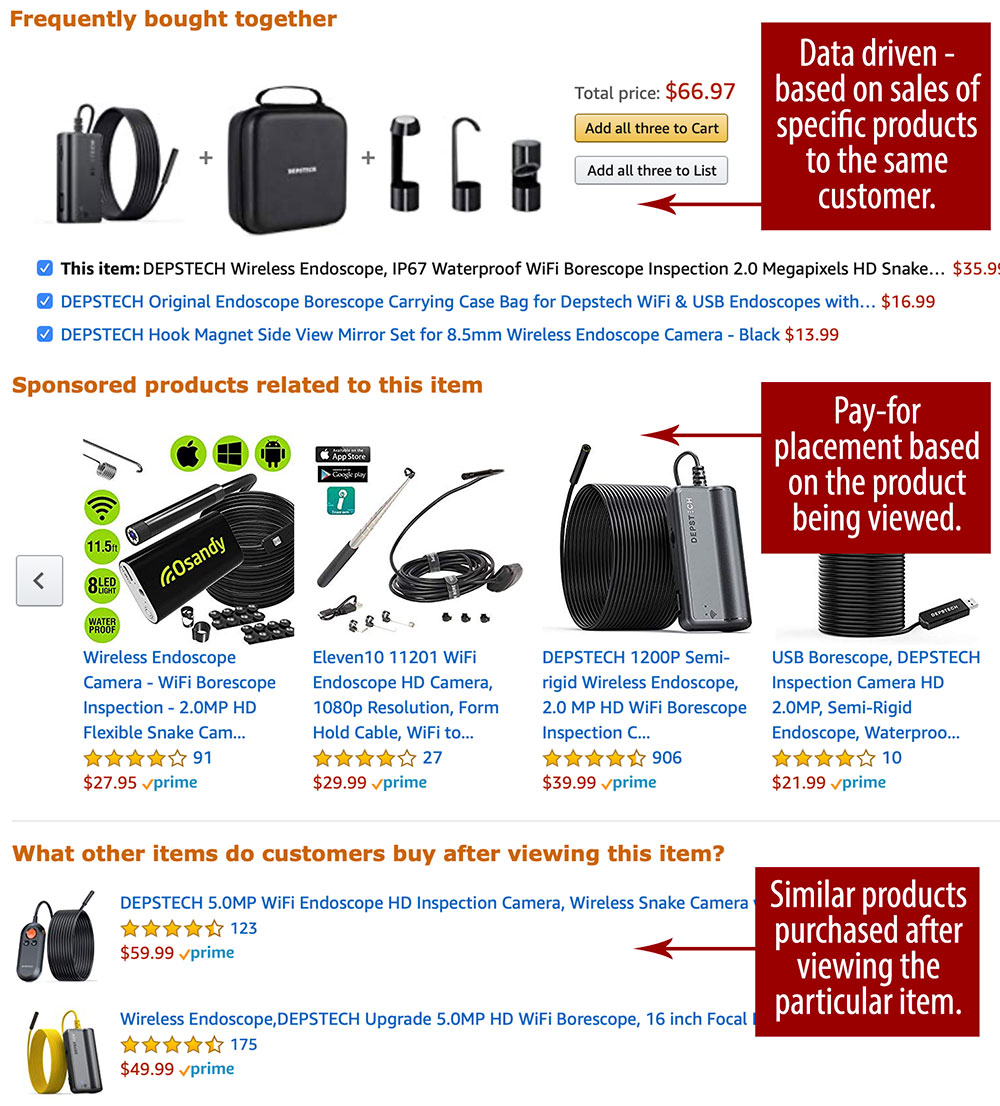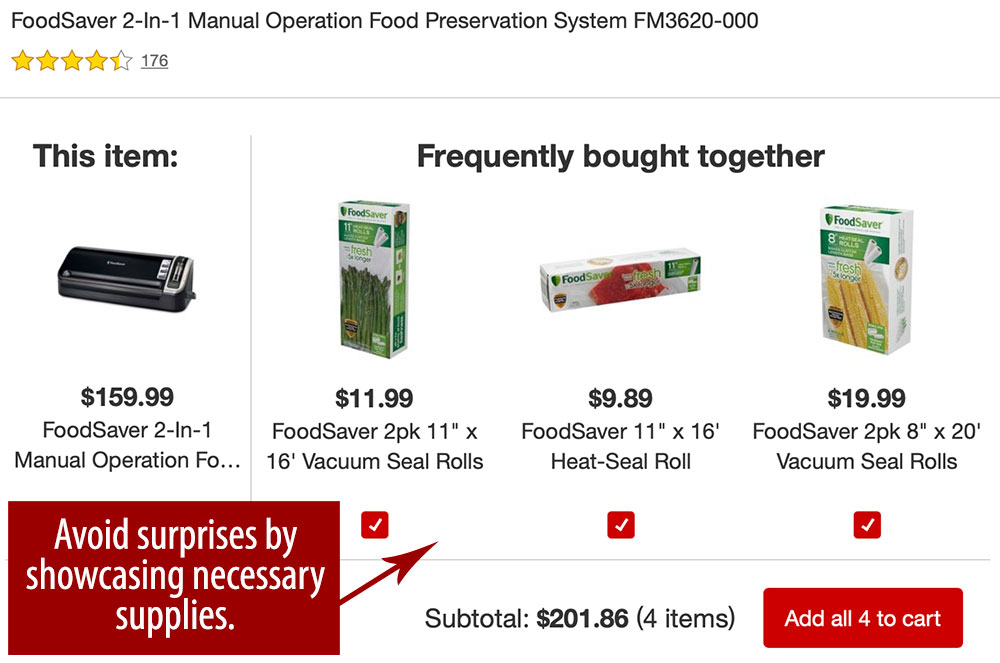Cross-selling is one of the best ways to increase overall revenue. This tried-and-true practice can help retailers of all sizes and product types boost average sales totals and customer loyalty.
Cross-selling is the act of successfully offering complementary items on the same or subsequent orders. When asked if you want fries with your hamburger, that’s cross-selling. And it can work wonders, especially if the additional item(s) have a higher profit margin.
Merchants are familiar with the traditional methods of cross-selling, such as listing related items and accessories. Amazon, for example, offers at least three types of related items on most of its product pages: “Frequently bought together,” “Sponsored products related to this item,” and “What other items do customers buy after viewing this item?”

Amazon uses several cross-selling features on its product pages.
The cross-selling of services could include installation or extended warranties.
Benefits of Cross-selling
Increased average order values. Consumers tend to buy more when offered logical add-ons, especially when items create a complete set.
Higher profit margins. You can turn sales of low-profit goods into high-profit orders. This is why most stores sell printers at or near cost; the real money comes from ink cartridges and paper.
Increased average lifetime customer value. Repeat customers trust your recommendations and are otherwise easier to sell to.
More packaged sales. Packaged sales of items that are typically purchased together help the store and its customers. Packaged offerings can be data- or catalog-driven. A mixture of both makes sense.
Packaged products don’t necessarily have to be bundled deals, either. Best Buy presents on its website the most common Xbox accessories, which is key for parents who aren’t familiar. There’s no difference in price, however, if the products are purchased together or separately.

Cross-selling common accessories, such as for Xbox, is also a form of educating shoppers. Source: Best Buy.
Better customer experience. It’s frustrating to buy a product and find out later that you need something that isn’t included. For example, a food sealer machine typically comes with only a few bags. Recommending extra supplies can thwart customer dissatisfaction.

Guide shoppers by showcasing necessary supplies, such as these bags to accompany a food sealer. Source: Target.
Solve a Problem
The highest converting cross-sell programs solve an expected problem. Think of common supplies and accessories.
| Product | Supplies & Accessories |
|---|---|
| Printer | Ink cartridge, paper, specialty cable |
| Smartphone or tablet | Screen protector, case, keyboard, car charger, extra cable |
| Slow cooker | Carrying bag, disposable liners, lid latch |
| Basketball hoop | Spray chalk, street paint, extra net |
| Backyard grill | Cover, utensils set, apron, spices |
It’s possible, however, to offer too many options, confusing shoppers to the point of purchasing nothing. Amazon is guilty of this, but it relies on targeted emails to bring consumers back. That’s a practice most small-and-midsized stores can’t afford. So keep suggestions simple.
Getting started with cross-selling can seem daunting, but it’s worth the time. Start by identifying the most logical add-ons for your store’s best-selling items.
Those add-ons could be related products if an item doesn’t require supplies or accessories. Analyze which products are often purchased together. Then cross-sell each of them.
January 7, 2020 at 09:13AM
via https://www.aiupnow.com
Pamela Hazelton, Khareem Sudlow
